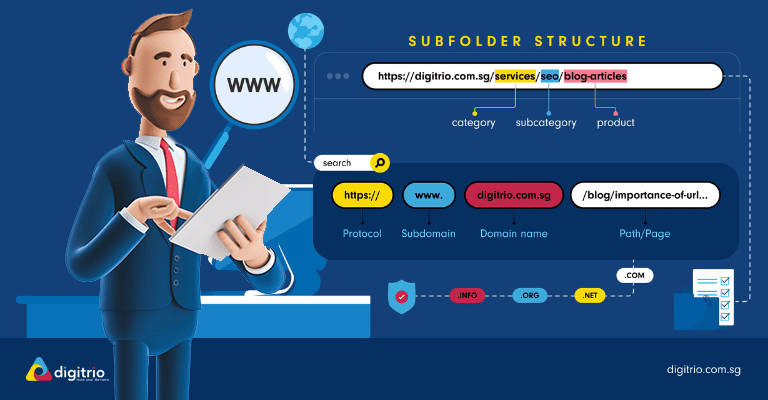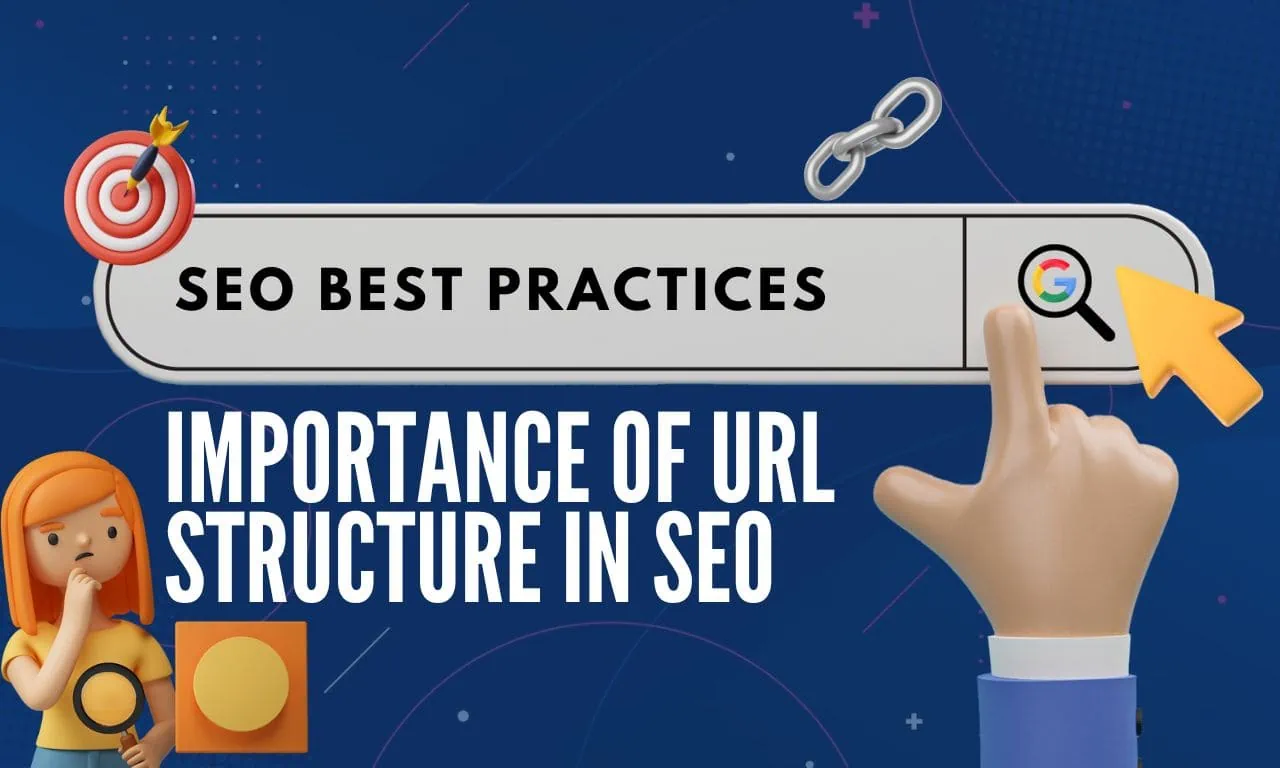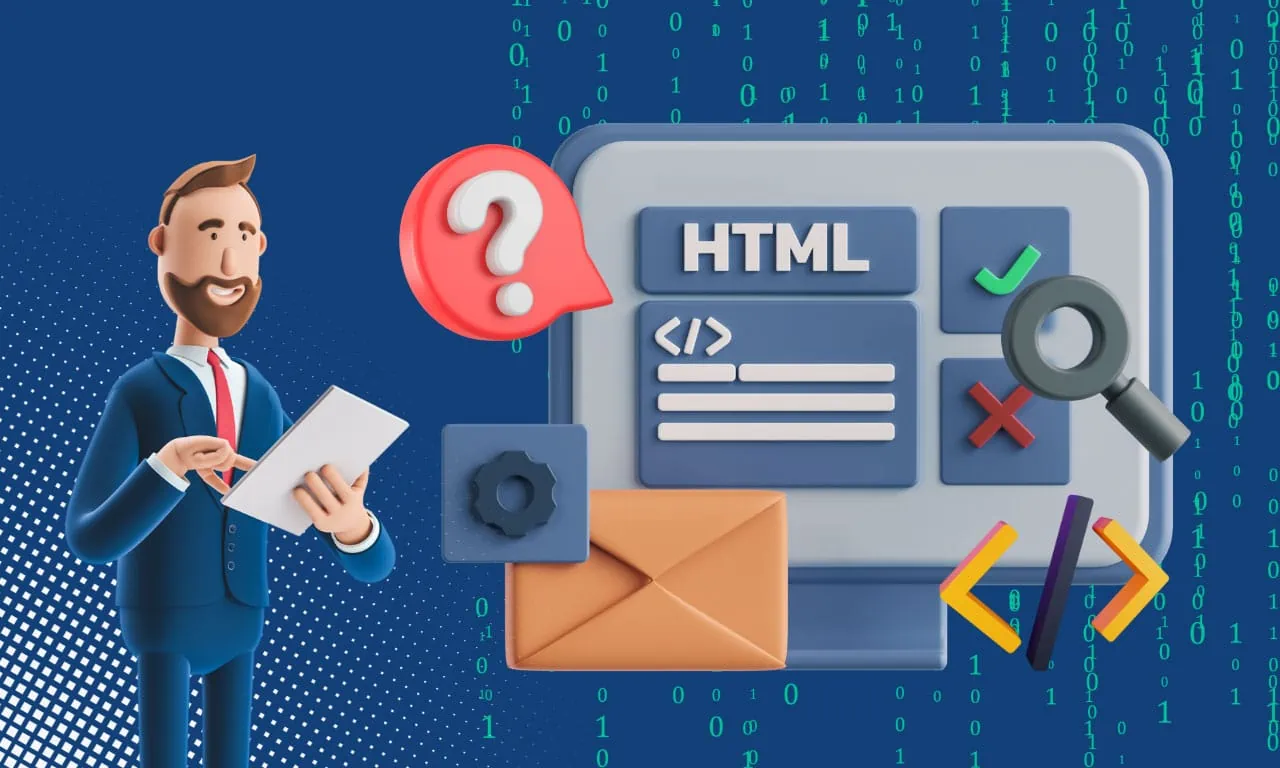A URL structure may just be a small segment in the world of search engine optimization (SEO), but even Google recognises its impact. A well-crafted, SEO-friendly URL not only benefits users but also helps search engines understand and index your content more effectively.
So if you're a business owner or marketing professional who wants to dive deep into the fundamentals of SEO and URL structures, you've come to the right place.
In this article, we'll answer these important questions:
- 1What is a URL?
- 2What are the parts of a URL structure?
- 3Why does it play a crucial role in SEO?
- 4What goes into creating the optimal URL?
Let's learn all about URL structures now.
URL: What is It?
A URL (Uniform Resource Locator) is often referred to as a web address, defining the precise location of a specific web page or file on the internet.
What's in a URL structure?

A well-structured URL is crucial for both user experience and SEO. Let's delve into the primary components of URL structure.
- 1Protocol: One of the most common protocols for websites, HTTPS (Hypertext Transfer Protocol Secure), enables secure communication over a computer network using encryption.
- 2Subdomain: adds an extra layer of organization to your URL structure. For example, it is sometimes used to create a blog or for region-specific versions of your site, which helps with geotargeting.
- 3Domain: represents your website address, which is vital in helping users identify your site. It's essential to keep your domain name short and memorable.
- 4URL path: the hierarchical parts of a URL that indicate the specific page or section being accessed. Organizing URL paths in a logical manner can improve your site's overall SEO and user experience.
What Google Says About URL Structure
Google says that a website's URL structure should be as simple and logical as possible. They should also be human-readable and easy to interpret. This makes it easier for both users and search engines to understand the content and organisation of your site.
Their guidelines include:
And to avoid:
Remember, improving your URL structure is just one aspect of optimising your website for search engines. However, it's an important component that should not be overlooked in any SEO strategy.
Quick Tip: Are you migrating your website & tweaking your URLs? Watch this video by Google to learn more about how you can move a site with URL changes.
Why is URL Structure Important?
An SEO-friendly URL structure is known to provide an excellent navigational experience for users, improve search engine rankings, and allow search engines to crawl and index pages more effectively.
Improves User Experience
A well-crafted URL structure helps to indicate the destination page for both humans and search engines. By using clear and descriptive keywords in the URL, we can improve the user experience and make it easier for visitors to navigate our website, especially those with many categories and sub-pages.
Boosts Search Engine Ranking
URL structure enables Google search algorithms to determine the relevance and structure of a website's content. As a result, a well-structured web address can improve our website's visibility in search engine results pages (SERPs), contributing to higher click-through rates, increased traffic, and higher rankings.
Better Links for Sharing
When sharing our content on social media, a concise and descriptive URL structure encourages users to click and share the link with others.
Let's take a look at these 2 links:
With this comparison, it becomes clear which link is superior. The first link looks suspicious and looks possibly like a spam site. Meanwhile, the second link makes it obvious what the content is about, and where the link will be taking users. Hence, tailoring your URL can also attract clicks through social media sharing, and is not just limited to Google search.
What Makes A URL Structure SEO-Friendly?
1. Keep it as short as possible
When creating URLs, it's better to keep them short. Short URLs are easier to remember and share, which makes them user-friendly. Also, despite not being one of the ranking factors, Google prefers shorter and simpler URLs when showing search results. According to John Mueller of Google, a practical rule of thumb is to keep URLs under 1,000 characters.
2. Include keywords
Incorporating keywords in your URLs can improve your website's SEO by providing information about the content of the page. This aids search engines in understanding the relevance of your page and helps users decide whether they want to click through to your website.
3. Be consistent—exclude terms that might change
Using consistent terms helps maintain a clear URL structure. For example, avoid including years, dates, and numbers in your URLs that may change over time.
4. Use hyphens, not underscores
In URL structures, separating words with hyphens (/what-is-seo/) rather than underscores (/what_is_seo/) makes them more human-readable and SEO-friendly.
5. Remove redundant words
Remove filler words (e.g. and, the, a, for, to, or) from your URLs unless it is part of the keywords you want to target.
6. Use lowercase letters
Using lowercase letters in your URL helps maintain consistency and improves readability. Some servers are case-sensitive, so mixing cases can lead to broken links and duplicate content.
7. Tailor it differently for blog articles and e-commerce products
Adapting a proper URL structure for blogs and e-commerce products adds clarity and relevance.
For blogs, you could use website.com/blog-title. For multiple blog categories, you can use website.com/category/blog-title.
For e-commerce, you could use website.com/category/sub-category/product. For example, website.com/women/dresses/formal-gowns.
8. Use categories & subfolders

Adding categories and subfolders to your URL structure can highlight the relationship between pages and improve navigation. Use them to group related content, ensuring your URLs reflect the website's logical hierarchy.
Common Mistakes in URL Structure
1. No HTTPS Protocol
One common error in URL structuring is not using the HTTPS protocol. HTTPS ensures that the data sent between users and websites are encrypted, providing security and building trust. To make your website more SEO-friendly and secure, it's crucial to obtain an SSL certificate and implement HTTPS on your website.
Did You Know? According to Google, "A page must be served over HTTPS to be eligible for Good page experience status in Google Search."
2. Not doing 301 redirects for old URLs to new URLs
Changing a URL structure can affect your search engine rankings if not handled properly. When updating URLs, always use 301 redirects to link old URLs to new ones. These redirects inform search engines that the particular page has permanently moved, preserving valuable SEO history and authority.
3. Multiple versions of the homepage
Some websites have multiple versions of the homepage (e.g. "http://example.com", "https://example.com", "example.com/index.html"). This can confuse search engine bots and crawlers. To avoid this, choose one version and use 301 redirects to guide users and search engines to the preferred URL.
4. Similar pages should be redirected
Duplicate content can negatively impact your SEO efforts. If you have similar pages with the same content, it's essential to use a canonical tag or 301 redirects to consolidate these pages and avoid diluting your SEO authority.
5. Don’t use subdomains unless necessary
While subdomains (e.g. support.website.com) can be useful for organising your website, they can sometimes harm your SEO performance. It's better to use subfolders within the main domain (e.g. website.com/support), as search engines often treat subdomains as separate websites. By keeping all content within the main domain, you'll improve your overall SEO performance.
Key Takeaways
- Creating SEO-friendly URLs is essential for improved user experience, Google rankings, and link sharing on social media.
- Crafting an optimal URL structure involves logical organisation, strategic use of keywords, and simplicity.
- Implementing these practices takes your website's SEO to the next level, enhancing page visibility, click-through rates, and boosting search rankings.
Congrats! You Now Know More About URL Structures

Although many of us already know the basics of SEO, learning about what makes a good URL structure will now give you an edge when trying to rank your website.
But this is just the tip of the iceberg. If you want to take your digital marketing strategy to the next level, why not consult a professional? At Digitrio, we provide comprehensive SEO services, content marketing services, and website design to align with your business objectives.
Contact us today and let us understand how we can help you achieve better results online!



